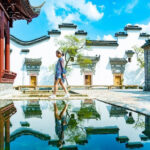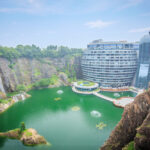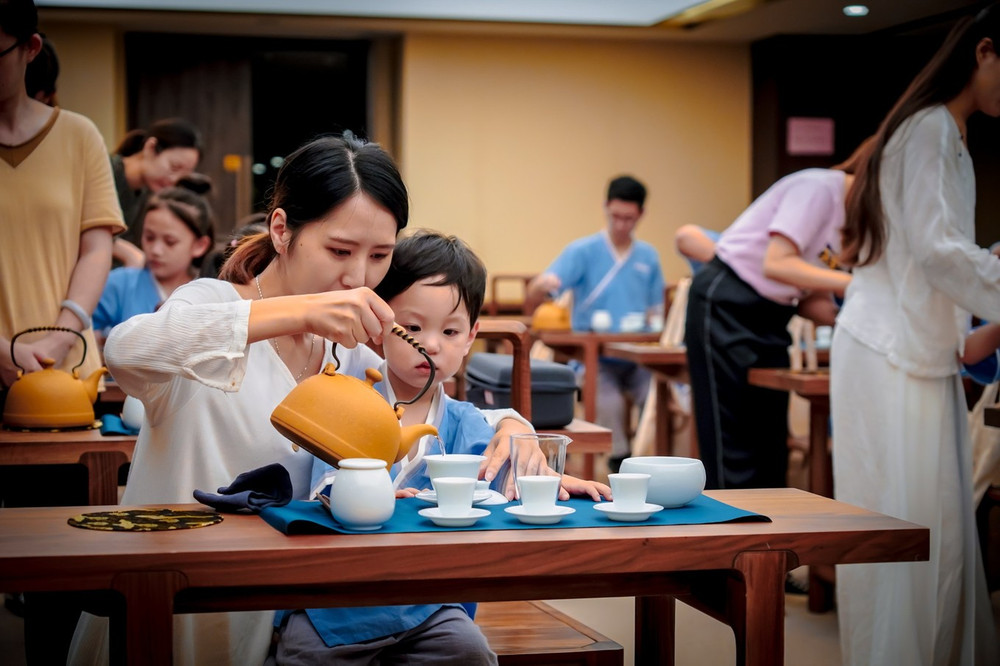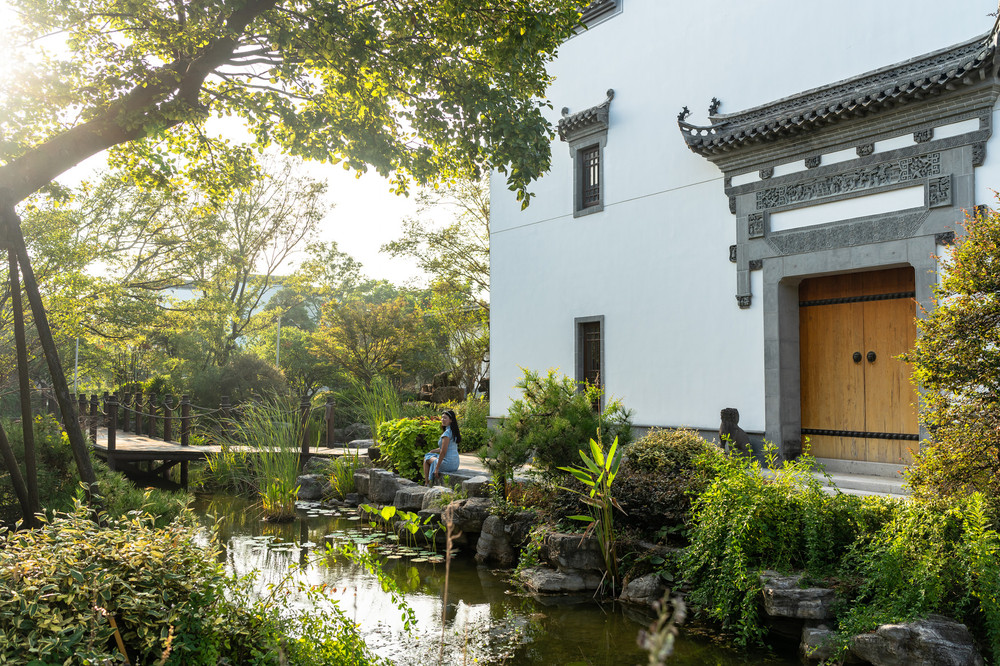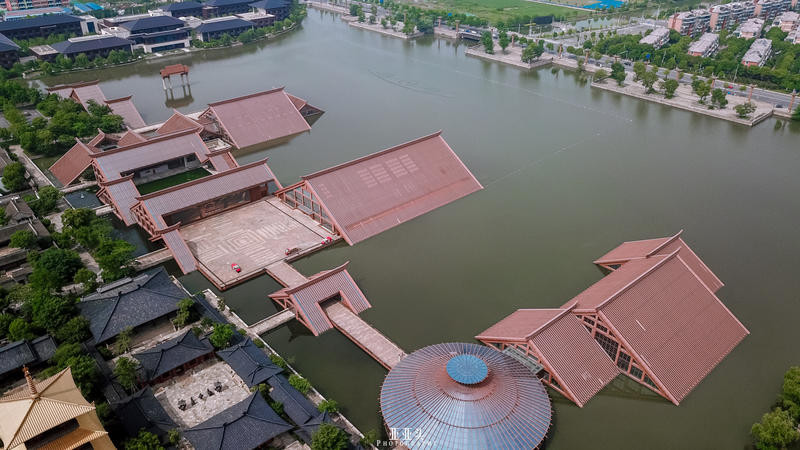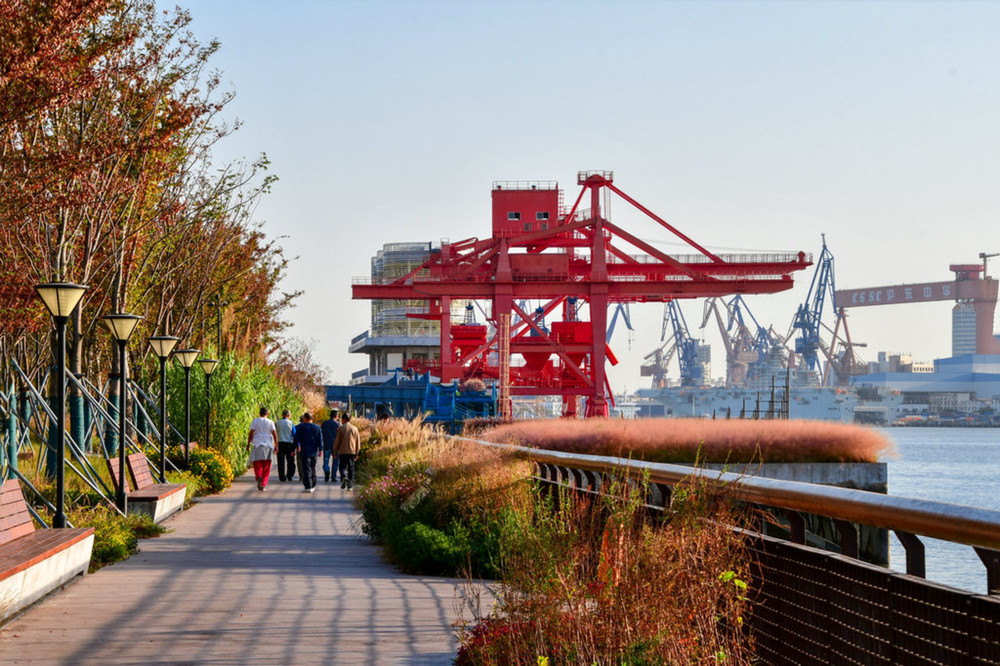Duration: 1 day. Play style: Independent travel.
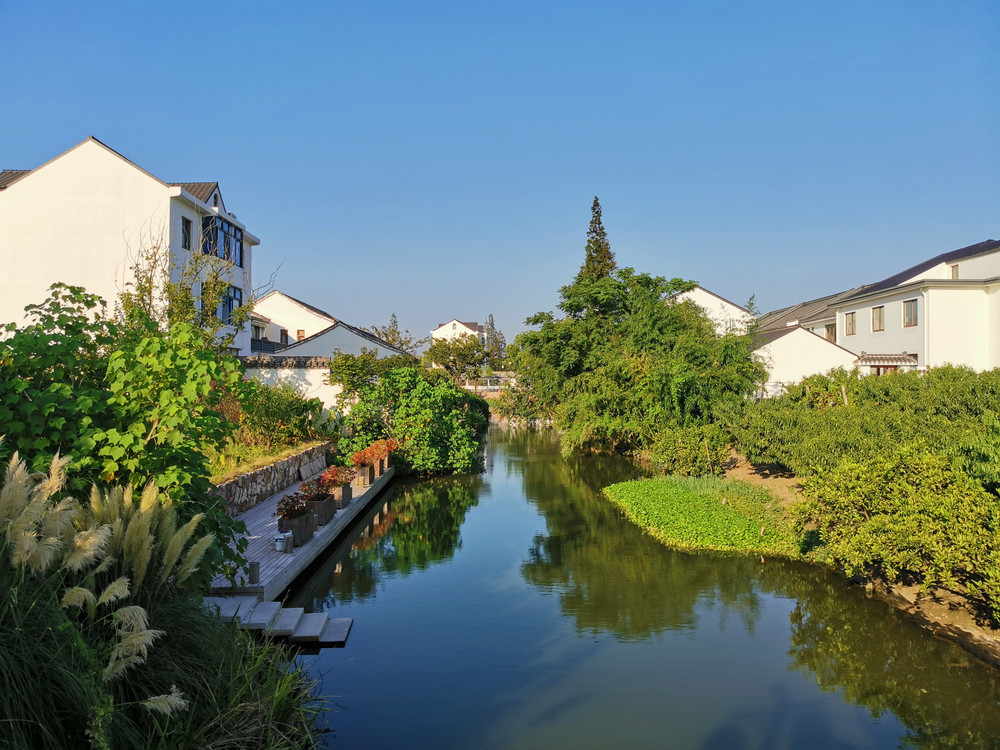
The author visited these places: Qingcun Town, Shanghai. Published on August 27, 2020, 21:48.
I heard that Wufang Village, Qingcun Town, Fengxian District, one of the first batch of nine rural revitalization demonstration villages in Shanghai, has a nice scenery, so I wanted to take a look on the spot. On August 16, 2020, I went to Fengxian. When I returned in the afternoon, I deliberately detoured to Wufang Village.
As soon as I entered Wufang Village, I was immediately impressed. It can be seen that houses, farms, forests, waters, fields, roads, bridges, etc., have been carefully designed, laid out, and renovated. The original farmhouses have been rebuilt and reconstructed on the original basis into rural homestays and entrepreneurial office buildings with unified exterior styles and in an orderly manner.
After the renovation, the village retains the original rural features. The buildings with white walls and black tiles blend with the rural environment. The building tones are simple, elegant, and clean, and there are also innovations. The soft slope roof streamline, simple wooden decoration lines and window frames, and the building exterior walls painted with traditional style murals.
The village landscape with changing views shows the softness of Shanghai-style water towns and the simplicity and naturalness of rural features. It is said that the overall style renovation design of Wufang Village is derived from the Chinese painting “Ten Scenes of Taoyuan Wufang.” It seems that the renovated Wufang Village really has the flavor of a village in Chinese paintings. “Everywhere you look is a scenery,” reflecting the design intention of “painting beauty in the countryside and keeping nostalgia with art.”
The peach in Taoyuan Wufang Village is yellow peach. It is said that the oldest yellow peach tree in Wufang Village was planted in the early 1980s. In the 1990s, Qingcun Town, Fengxian District, Shanghai, where Wufang Village is located, was named “the hometown of yellow peaches in China” by the Ministry of Agriculture.
The rural buildings with white walls and black tiles and the wild peach blossoms complement each other best. When I arrived at Wufang Village, it was the season when yellow peaches were ripe. It was no longer the most beautiful season of Wufang Village when peach blossoms were in full bloom in spring. Because the scorching sun was like fire, the peach leaves were drooping and listless, and the tree scenery was not good.
Although there are no peach blossoms as a backdrop, there are green trees and clear waters as a backdrop. Wufang Village is still pleasing to the eye. Looking up, the original yellow peach trees, orange trees, persimmon trees, neem trees, zelkova trees, pomegranate trees, and bamboo forests and vegetable gardens that have been preserved can be seen beside and behind the village houses.
Small gardens, small vegetable gardens, and small orchards are dotted beside the farmhouses. Rich vegetation creates a rural atmosphere. Some trees such as Yoshino cherry, pear tree, pomegranate tree, beauty plum, wintersweet, red maple, Japanese maple, and feather maple are dotted around the buildings, at road intersections, and beside bridges. The lower layer is planted with golden chrysanthemum, daisy, spiraea, evening primrose, Veronica hybrida, sedum lineare, Abelia grandiflora, and nandina domestica.
In order to better create a rural atmosphere, the pedestrian paths in the village are paved with elements such as old stone slabs, small blue bricks, and pebbles, combined with the combination design of rural plants and simple sketches, making the walking paths more rural.
Pavements and walls are constructed with materials that exude a rustic charm, while discarded bottles and jars, millstones, and other farming tools are artistically arranged as landscape features. The century-old residence in the village, which now serves as a village history museum, has preserved its original architectural style quite well. The previously installed aluminum alloy windows and doors have been replaced with traditional Chinese wooden ones, achieving a restoration that maintains the old appearance.
The natural river channels in Wu Fang Village have clearly been dredged and managed, with reeds, flowering reeds, and cattails planted along the banks to add a touch of wilderness. The water surface is adorned with a variety of emergent, floating, and submerged plants such as yellow iris, iris, lotus, water lilies, and pickerelweed. Small wooden boats are moored at the river docks, and the scenery is picturesque with water town characteristics at every glance.
With its abundant water systems and dense river network, Wu Fang Village naturally has numerous bridges. It is said that there are nearly 20 bridges in the village, each with its own distinctive features. Functionally and aesthetically appropriate, bridges that allow vehicle traffic are larger in scale and decorated with stone railings, while pedestrian bridges are light and small, blending into the surrounding scenery.Wu Fang Village’s transformation covers a modest area of only 358 acres, which can be toured in about half an hour. This small section might represent a single production team or a natural village within the larger Wu Fang Village, with other areas likely retaining their original state. As a rural revitalization demonstration village, it has been a significant investment. The area appears to be designed as a creative cultural and tourism rural area, featuring projects such as:
– The Rural Youth Innovation and Entrepreneurship Center
– Rural Food Tribe
– Rural Leisure Room
– Living Post
– Villager’s Homestay
– Rural Cultural and Creative Experience Hall
– Nature Education Classroom
The transformation must have cost hundreds of millions of yuan. However, as it is still in its initial stage, some venues are not yet completed, and some doors remain tightly closed.
Strolling through Wu Fang Village, one finds an elegant and clean environment, yet somewhat desolate. Despite it being the weekend, there are very few tourists. Wu Fang’s rural charm, while refined, is limited by the small area, which can be explored in half a day. The lack of nearby natural landscapes or large-scale entertainment venues like Disneyland makes it difficult to attract tourists from the central city to stay in Wu Fang.
It is said that Wu Fang Village has 17 homestay rooms, named with pastoral themes such as Morning Cloud, Dew Walk, and Stream Brook. However, it seems that few are open to guests. I am not optimistic about the prospects of Wu Fang’s homestays and rural tourism.
Regardless, for the villagers of this transformed area of Wu Fang Village, living in such a refined, clean, and pleasing environment is indeed a blessing, resembling an idealized idyllic rural landscape. To sustain and maintain such a pleasant living environment, continuous and significant investment is required, which is not easily replicable or scalable.



